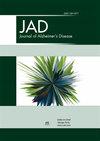The Catastrophe of Intracerebral Hemorrhage Drives the Capillary-Hemorrhage Dementias, Including Alzheimer’s Disease
IF 3.4
3区 医学
Q2 NEUROSCIENCES
引用次数: 0
Abstract
This review advances an understanding of several dementias, based on four premises. One is that capillary hemorrhage is prominent in the pathogenesis of the dementias considered (dementia pugilistica, chronic traumatic encephalopathy, traumatic brain damage, Alzheimer’s disease). The second premise is that hemorrhage introduces four neurotoxic factors into brain tissue: hypoxia of the tissue that has lost its blood supply, hemoglobin and its breakdown products, excitotoxic levels of glutamate, and opportunistic pathogens that can infect brain cells and induce a cytotoxic immune response. The third premise is that where organisms evolve molecules that are toxic to itself, like the neurotoxicity ascribed to hemoglobin, amyloid- (A), and glutamate, there must be some role for the molecule that gives the organism a selection advantage. The fourth is the known survival-advantage roles of hemoglobin (oxygen transport), of A (neurotrophic, synaptotrophic, detoxification of heme, protective against pathogens) and of glutamate (a major neurotransmitter). From these premises, we propose 1) that the brain has evolved a multi-factor response to intracerebral hemorrhage, which includes the expression of several protective molecules, including haptoglobin, hemopexin and A; and 2) that it is logical, given these premises, to posit that the four neurotoxic factors set out above, which are introduced into the brain by hemorrhage, drive the progression of the capillary-hemorrhage dementias. In this view, A expressed at the loci of neuronal death in these dementias functions not as a toxin but as a first responder, mitigating the toxicity of hemoglobin and the infection of the brain by opportunistic pathogens.脑出血的灾难性后果导致了包括阿尔茨海默病在内的毛细血管出血性痴呆症的发生
这篇综述基于四个前提,加深了人们对几种痴呆症的理解。其一,毛细血管出血在所研究的痴呆症(搏动性痴呆症、慢性外伤性脑病、外伤性脑损伤、阿尔茨海默病)的发病机制中占据重要地位。第二个前提是,出血会给脑组织带来四种神经毒性因素:失去血液供应的组织缺氧、血红蛋白及其分解产物、兴奋性毒性谷氨酸水平以及可感染脑细胞并诱发细胞毒性免疫反应的机会性病原体。第三个前提是,当生物进化出对自身有毒的分子时,如血红蛋白、淀粉样蛋白(A)和谷氨酸的神经毒性,该分子一定有某种作用,使生物具有选择优势。第四,血红蛋白(氧运输)、淀粉样蛋白(A)(神经营养、突触营养、血红素解毒、抵御病原体)和谷氨酸(一种主要的神经递质)具有已知的生存优势作用。从这些前提出发,我们提出:1)大脑已进化出一种对脑出血的多因素反应,其中包括几种保护性分子的表达,包括血红蛋白、血卟啉和 A;2)鉴于这些前提,合乎逻辑的假设是,因出血而进入大脑的上述四种神经毒性因素推动了毛细血管出血性痴呆症的发展。根据这一观点,在这些痴呆症的神经元死亡部位表达的 A 的功能不是毒素,而是第一反应器,可减轻血红蛋白的毒性和机会性病原体对大脑的感染。
本文章由计算机程序翻译,如有差异,请以英文原文为准。
求助全文
约1分钟内获得全文
求助全文
来源期刊

Journal of Alzheimer's Disease
医学-神经科学
CiteScore
6.40
自引率
7.50%
发文量
1327
审稿时长
2 months
期刊介绍:
The Journal of Alzheimer''s Disease (JAD) is an international multidisciplinary journal to facilitate progress in understanding the etiology, pathogenesis, epidemiology, genetics, behavior, treatment and psychology of Alzheimer''s disease. The journal publishes research reports, reviews, short communications, hypotheses, ethics reviews, book reviews, and letters-to-the-editor. The journal is dedicated to providing an open forum for original research that will expedite our fundamental understanding of Alzheimer''s disease.
文献相关原料
| 公司名称 | 产品信息 | 采购帮参考价格 |
|---|
 求助内容:
求助内容: 应助结果提醒方式:
应助结果提醒方式:


